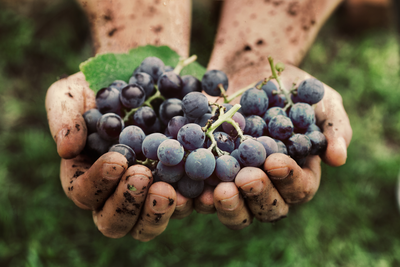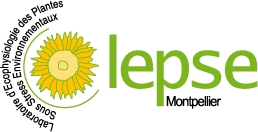Monitoring tools for vine water stress.

MOMENT OF INNOVATION..
Stakes.
INNOVATION STATUS.
The management of water stress on the vine is fundamental to produce grapes able to make "quality wines". Depending on the type of wine sought (color, degree of alcohol acidity and aromatic profile, yield ...) the vine must follow a water course during the production cycle, with periods when its water comfort must be maximum and others where one will seek a water stress more or less pronounced. Steering this trajectory is strategic, especially when using irrigation. For this it is necessary to be able to follow the hydric state of the vine and the parcel.
What innovative tools are developed today to ensure this follow-up? Let's mention three:
Thermal infrared imaging technologies
This technique is based on the fact that the transpiration flow causes a decrease in the surface temperature of the sheet. When the stomata close, the decrease in the fraction of energy dissipated by evaporation causes an increase in this temperature. This property has been used for a long time to estimate the degree of opening of stomata on covering covers. However, the first attempts to use this technique with spot IRT sensors on grapes have come up against the problem of variability in the space and time of these temperatures.
Recent access to IRT imaging has opened new perspectives for the development of tools to apprehend the hydric state of the vine and the control of irrigation. The high resolution thermal images obtained make it possible to considerably increase the sampled leaf area and to integrate wet and dry reference surfaces making it possible to calculate various indices (Crop Water Stress Index, CWSI). The analysis includes an image processing step in which only illuminated leaf surfaces are selected and retained in the analysis. Various studies show that the calculated indices are strongly correlated with the mean cover conductance measured by porometry.
The sap flow sensor
The sap flow sensors allow a direct measurement of the transpiration of a stem or whole plant without disturbing the environment of the leaf. Although sweat variations are primarily determined by changes in stomatal opening, transpiration is also influenced by the climatic environment. As a result, variations in sap flow may not be related to variations in stomatal opening. Generally, transpiration data are used to calculate a stress coefficient involving evapotranspiration calculated from weather data and a crop coefficient taking into account the characteristics of the vegetation cover and in particular its efficiency of radiation interception.
There are different methods for measuring sap flow, but all rely on thermal principles. A heating element brings energy to the system and heat losses are measured using thermocouples. The main methods used for the vineyard are the heat balance method, the so-called "Granier" heat dissipation method and the heat pulse methods.
Today, several measurement systems are available on the market, some of which integrate wireless data acquisition and transmission systems (Dynamax, ICT International, Advanced Measurements and Controls Inc., Tranzflo NZ Ltd, EKOMATIK, UP -GmbH). Apart from research applications, these sensors are also used in commercial vineyards (Fruition Sciences).
The foliar pressure chamber
Water potential is one of the most commonly used parameters for measuring the water status of the vine. This measure was imposed with the development of the pressure chamber of which different models are marketed. This equipment provides access, depending on the measurement mode, to the water potential at different points of the soil-plant-atmosphere system. Three indicators are more particularly used routinely: the foliar potential at noon, the stem potential and the basic leaf potential. Irrigation is triggered according to the exceeding of threshold values specific to each indicator and function of the production objectives.

French National Research Institute for Agriculture and Environment- INRAE

INRA Pech Rouge Experimental unit

Le Mas Numérique

Montpellier SupAgro


